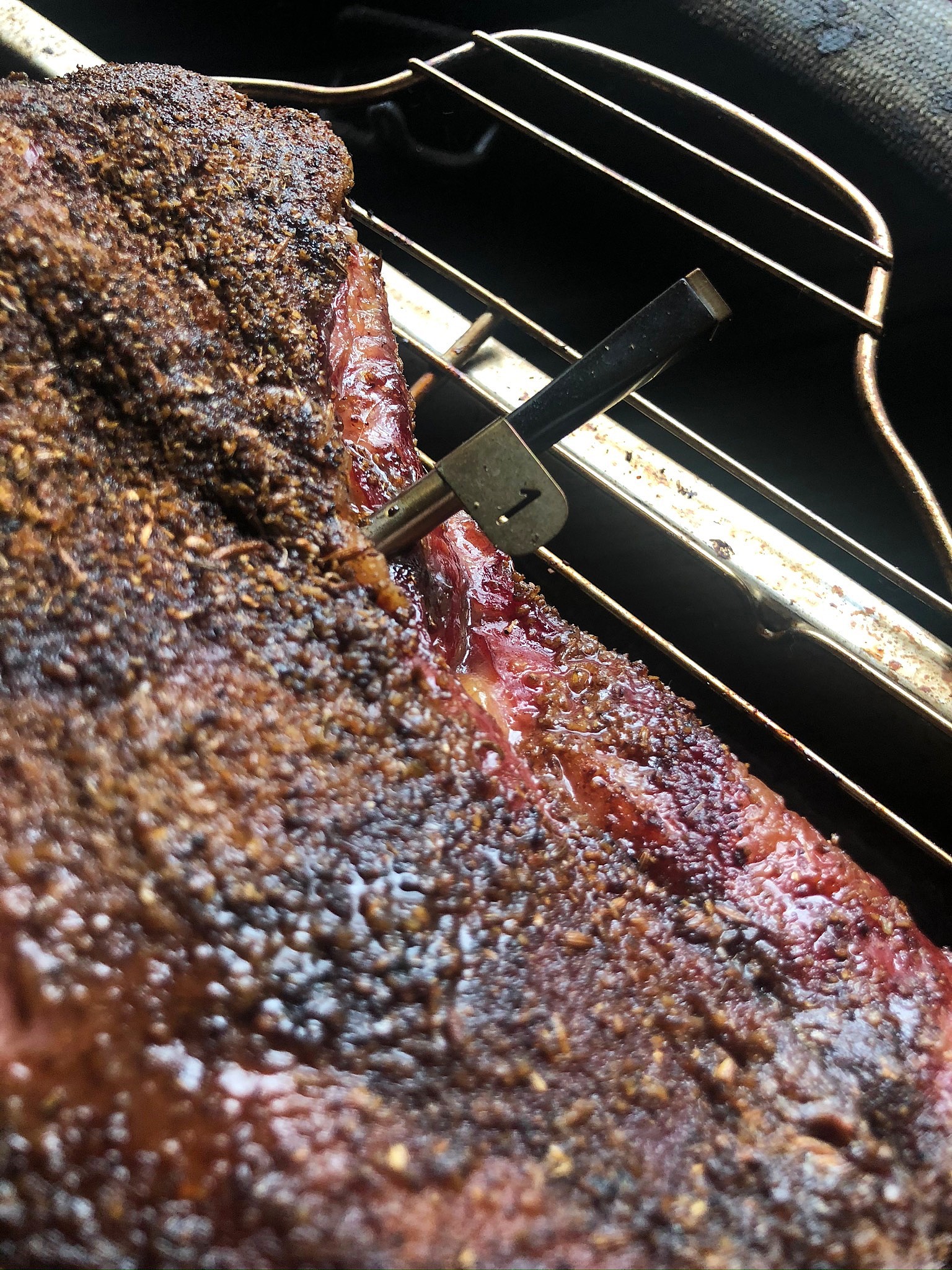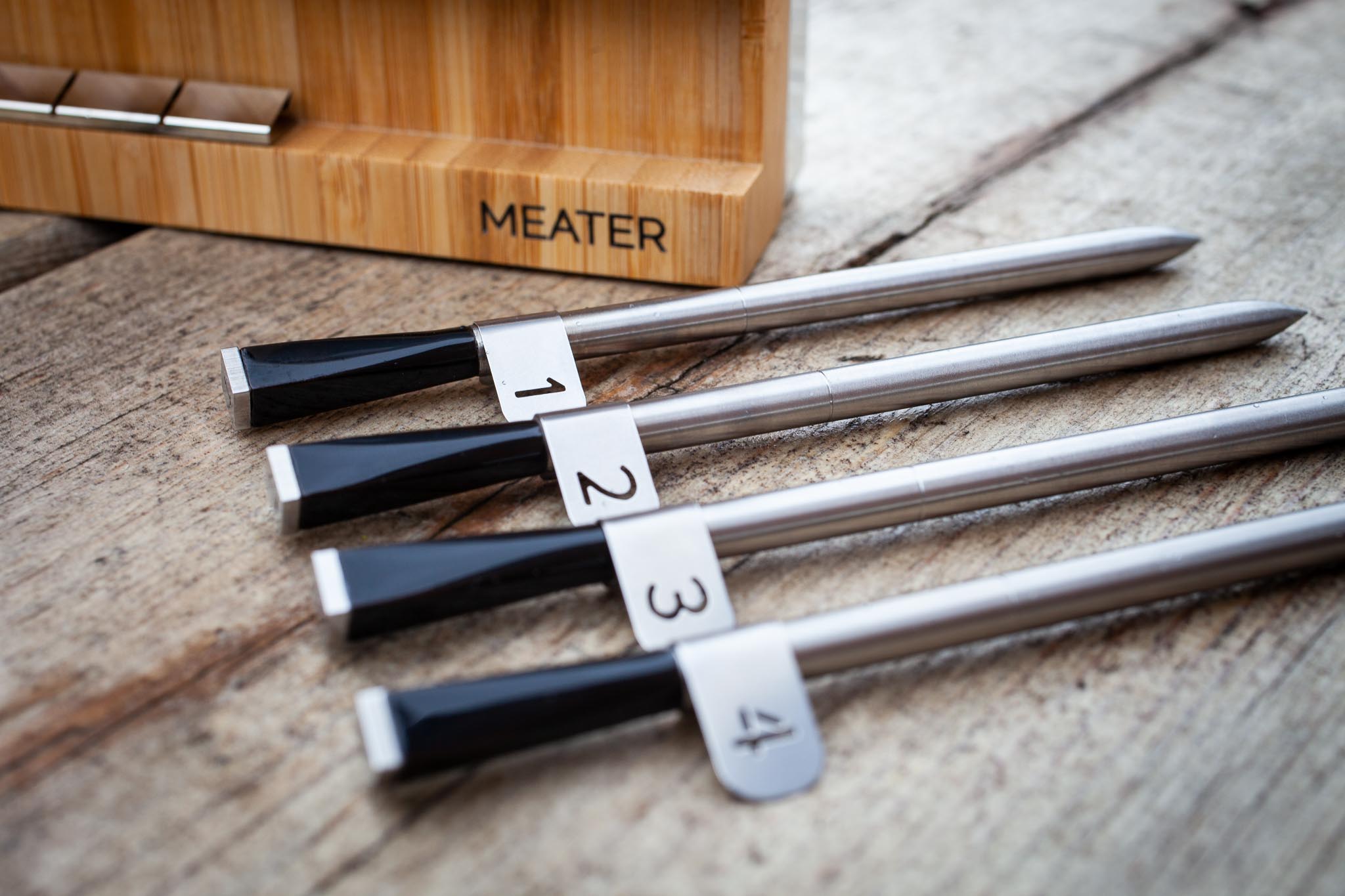MEATER Block Review
A Meater reading, but make it fun
We’ll admit that trialling the MEATER Block got us rather over-excited. ‘Ooooh, it’s started heating up!’ or ‘the temp has dropped below 150, all hands on deck!’ and then, later, ‘we’re 3 degrees away from target; prepare to rest!’ Like over-excited players in a game involving something way more important such as, say, submarine warfare, we found ourselves almost gameifying our cook, becoming addicted to the in-app changes, our eyes glittering with excitement over the blue glow of the screen.
The first thing that strikes you about the MEATER Block is that it’s a very good looking piece of kit; the kind of kit you have no problem setting up in your kitchen and leaving out, rather than hiding away in the cupboard. Then again, it’s a premium product with a price tag of £279, so it really should look the part. How well does it perform?

The ‘block’ charger communicates with the individual probes via Bluetooth, sending data to your phone (in our case an iPhone X via Wi-Fi). The main draw of the MEATER Block is the 4 probe design, which allows you to monitor multiple cooks. Here at Pit, we’ll often be doing this and it’s where the MEATER Block really comes into its own, preserving time and sanity. For the regular home user, however, there’s the benefit of being able to probe multiple pieces of meat such as steaks or fish, which can be notoriously tricky to cook just right. Basically, it saves the embarrassment of having one piece perfectly cooked, then another being over or under.
While others have reported problems with wireless connection over a long cooking period, we maintained ours throughout multiple cooks without problems, so it’s possible that MEATER has addressed this criticism, just as they addressed the problem of easily identifying the probes by adding numbered tags which clip onto the end of each one.
A thermometer is never going to be perfect in every situation of course, due to the wide range of variables at play in live fire cooking. Searing at high temperatures prior to longer slow cooking can throw the MEATER readings off, so it’s advisable to reverse sear in order to avoid this problem. At Pit, however, we tend not to use a thermometer for steaks anyway, preferring a frequent flip method to build a strong crust and relying on our instinct to know when a steak is done.

MEATER themselves acknowledge the problems inherent in monitoring long cooks, which run into problems thanks to the stall, a well-known phenomenon which occurs when cooking large pieces of meat such as pork shoulder or brisket, caused by evaporative cooling. The meat is sweating, basically, and won’t carry on cooking until its surface dries out. This causes obvious problems for the MEATER when trying to predict the cooking time, but it seems a little harsh to criticise them for it. This is a well-known problem which no one else has managed to solve, and surely anyone slow cooking a large piece of meat knows they’re in for the long haul?
At Pit, we always cook to temperature not time, and that’s just what the MEATER happens to be really good at measuring. We predicted our goat shoulder would take 6 hours at 160C and that it did, with the MEATER following its progress every step of the way. When we tried cooking a whole chicken, the MEATER proved itself invaluable. A more just-cooked succulent bird we have not tasted in some time.
It’s said that once people probe, they never go back to cooking completely instinctively and it’s easy to see why: the MEATER Block gets great results. Much of the fun comes from the app, which made us feel like some kind of all-seeing, all-knowing barbecue deity. The MEATER Block takes away a lot of the guesswork from a potentially tricky and often quite expensive cook and it’s a whole lot of fun to boot.
Pit was sent the MEATER Block free of charge.
